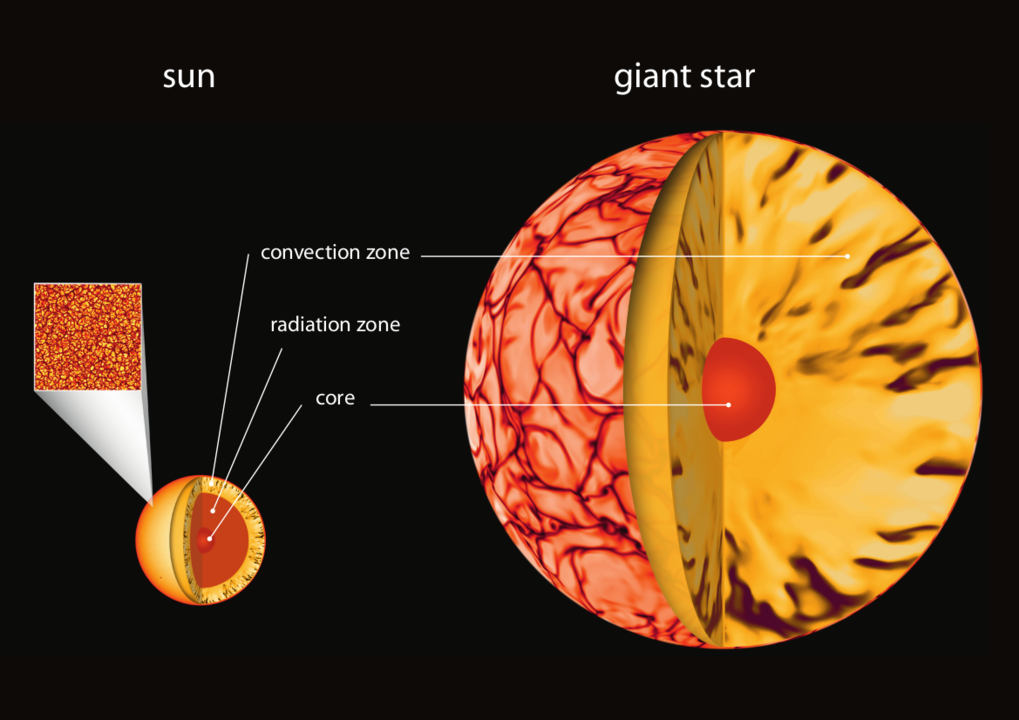Max Planck Institute for Solar System Research | 2020 Mar 09
By combining modern data analysis techniques with stellar structure modelling for main-sequence and giant stars, researchers shed new light on stellar dynamos.
Different stars can exhibit very different levels of activity. The Sun’s coronal mass ejections, flares and sunspots – all signs of solar activity – are rather feeble on an astronomical scale. Other stars are up to ten times more active, for example sporting huge starspots that cover a large portion of their disc. While researchers have long identified the magnetic fields generated in the interior of stars in a dynamo process as drivers of activity, the exact workings of this dynamo are still unclear. A group of scientists led by the Max Planck Institute for Solar System Research (MPS) in Germany has now searched for an answer by applying the same analysis to a sample of both main sequence and more evolved stars. They find that a common, turbulence-dependent dynamo mechanism plays a crucial role for stellar activity in all stages of stellar evolution. ...
In their interiors, stars are structured in a layered, onion-like fashion. In those with solar-like temperatures, the core is followed by the radiation zone. There, the heat from within is led outwards by means of radiation. As the stellar plasma becomes cooler farther outside, heat transport is dominated by plasma flows: hot plasma from within rises to the surface, cools, and sinks down again. This process is called convection. At the same time, the star’s rotation, which depends on stellar latitude, introduces shear movements. Together, both processes twist and twirl magnetic field lines and create a star’s complex magnetic fields in a dynamo process that is not yet fully understood. ...
Several models of the stellar dynamo have been proposed in the past, but two main paradigms prevail. While one of them puts a greater emphasis on the rotation and assumes only subtle effects of convectional flows, the other depends crucially on turbulent convection. In this type of convection, the hot stellar plasma does not rise to the surface in large-scale, sedate motions. Rather, small-scale vigorous flows dominate. ...
Common Dynamo Scaling in Slowly Rotating Young and Evolved Stars ~ Jyri J. Lehtinen et al
- Nature Astronomy (online 09 Mar 2020) DOI: 10.1038/s41550-020-1039-x
